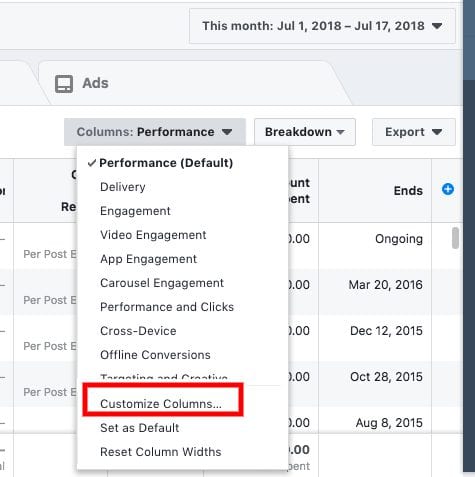
We’ve all been there. Your ads are running just fine and then seemingly out of nowhere they stop performing.
You’re surprised and disappointed to learn that your ads have stopped producing a profitable return-on-ad-spend (ROAS), they don’t have a steady click-through rate, and/or you don’t have any new quality leads.
When the initial shock begins to wear off, you’re stuck wondering where to go next with your ad performance.
Your brain is buzzing with questions: Perhaps you could have monitored your ads more often? Maybe you could’ve tested more creative? Did you make an unintentional mistake on budgeting or ad placements?
Regardless of how you got there, it’s important to know that it will be okay and there is a path forward. Together, we can take your ads from failing to scaling.
Ad Performance “Stages of Grief”
When your Facebook ads stop performing, your first instinct is probably to panic. Then you immediately wonder why (and why now) this is happening.
Once you go through those initial stages of grief, you can start looking ahead to rebuild your ads for longer-term stability and scaling. This blog post covers all of these stages and gives you some quick-start ideas for account recovery.
Don’t Panic
When the initial “my ads are totally failing!” feeling hits you, I realize it’s difficult to stay calm and not panic. Trust me, I’ve been there. Just take a deep breath and ask yourself this question:
Is everything truly failing or is it just a few ad sets and/or audiences?
This is an important question to dive into because your findings will usually show that some audiences or ad sets are actually performing the way they should.
I measure ad performance for most clients in cost-per-acquisition, click-through-rate, relevance score, return-on-ad-spend, cost-per-landing page view and other metrics. After I perform this assessment, I build custom dashboards using the Custom Reporting tool within the Ads Manager.
Then I select “Customize Columns” to pinpoint the data I want to report on.
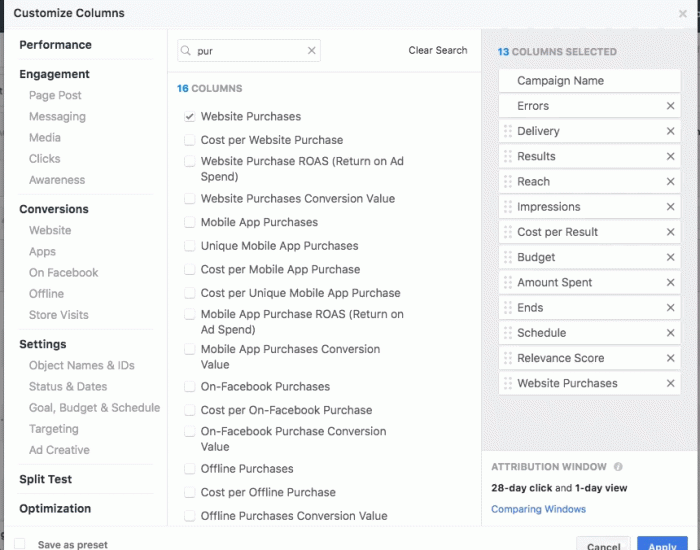
After I further assess this data, it gives me a much better picture of what is working and what’s not. I then take detailed notes on what is still performing well so I can include it in my rebuild.
Take a Step Back and Think About Ad Competition
Let’s take a quick step back and remember that over the past year, specifically in the first half of 2018, ad competition has continued to significantly increase on Facebook and Instagram, especially in the Facebook News Feed.
Facebook warned advertisers about this shift beginning in 2016 and they kept talking about it in 2017.
In short, there are more people advertising than ever before and the “ad load” (AKA the number of ads being shown in the News Feed) has increased while the overall number of users (specifically, users in North America) hasn’t increased at the same steady rate.
To counter the ever growing ad competition issue, Facebook has offered new ad placements in Messenger, Marketplace and Instagram Stories, so results can definitely be stunted if advertisers don’t experiment into these new placements and just stick to their old, previously successful playbook.
Ask yourself: are you still only targeting the Facebook News Feed? If so, keep reading…
In most cases, ad performance has declined due to one or more of the following reasons:
- Audiences are “worn out” and have been overused
- Creative hasn’t been updated recently
- Placements are too limited
- The bid is too narrow
So let’s unpack each of these issues.
1. Audiences are “worn out”
Say this phrase with me: first time impression ratio. It’s a huge deal, folks. This Facebook statistic tells you, by day and by ad set, how many of the impressions you’re showing are for the first time.
When you start a new ad for a new audience, that number is 100%. As you advertise longer and spend more money, that number declines. It’s important to understand this metric in relation to ad performance because if that number dips below 50%, you probably need to refresh creative or rebuild that audience.
You can begin finding “delivery insights” at the ad set level.
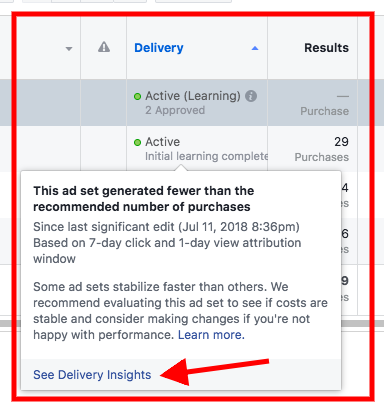
Once you click on that “See Delivery Insights” it takes you into this screen.
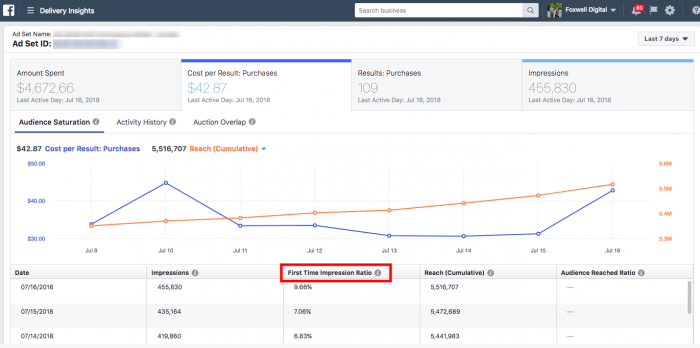
From here, you are able to see many data points, but there’s one that’s especially important: First Time Impression Ratio. This number shows you how many of those people are seeing the ad for the first time.
In this case, it’s very low. Normally, we want that to be above 50% for prospecting or brand new potential customers. If you’re updating creative and your audience sizes are right, this number will stay above 50%.
Here, the number is less than 10%, meaning 90% of that audience has seen the ad before. If I looked at the frequency metric, I’d likely see that number be above a 3 or 4 within a 7 day period–which is a major problem.
***Important note: is this post interesting to you? Take our upcoming course on this subject! ***
2. Creative hasn’t been updated lately
Be honest: When was the last time you updated your ad creative? When was the last time you tested new creative ideas in all parts of the funnel? How about testing stand-alone photo posts, or Instagram-specific creative?
One of the most common issues I see when auditing Facebook accounts is a singular focus on one ad type.
For example, somewhere along the way a lot of advertisers heard carousel ads “always work really well.” They can perform well, yes, but for prospecting, they actually don’t deliver sustainable results for most companies. Of course, there are many exceptions — but they tend to drive clicks but not as many purchases.
So instead of carousels, why not try focusing on content that looks or feels user-generated, or in fact is user-generated? In today’s competitive environment, it helps to mix in some creative that looks like something a friend took and also explains what the product does, and why it might benefit that person’s life.
If you can successfully update ad creative and test new ideas every two weeks, you would be in much better shape.
3. Placements are too limited
I can’t tell you the number of times I’ve seen accounts that only target the Facebook News Feed for placement. Don’t get me wrong, I love the good ol’ News Feed, but at this moment in time, it’s just too competitive to have that be the only place you’re targeting.
Here are some other placements where I’ve recently seen stable performance:
- Facebook Marketplace
- Facebook Messenger
- Instagram News Feed
- Instagram Stories
Perhaps most noteworthy, I’ve personally seen Instagram stories delivering positive results on prospecting audiences similar to that of the Facebook News Feed.
Have you experimented with new placements?
By simply expanding your options, you can help lower prices and reach more customers in a less competitive environment.
4. Your bid is too narrow
Last week on a coaching call, a client asked me to explain the pros and cons of bidding certain ways under a conversion objective. I started talking and didn’t stop for over an hour. Clearly, there’s a lot to talk about in reference to this subject!
One of the most common scenarios I see is when advertisers bid in a 1-day click window.
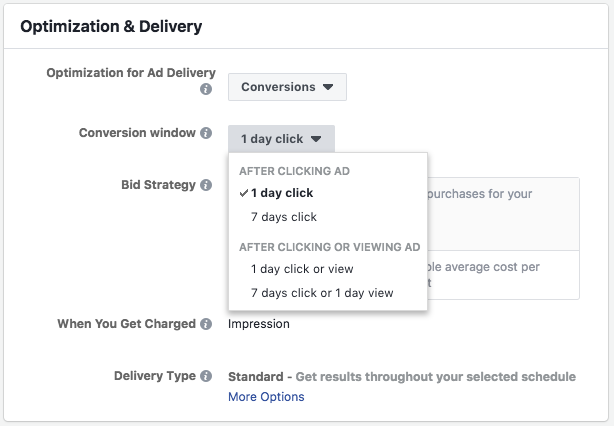
I myself have used 1-day click bidding and in many instances, it can work, but let’s think about the signal you’re giving Facebook. You’re saying to Facebook, “Find me people who are likely to buy something within one day of clicking on my ad.”
This tactic can be incredibly limiting.
Think about how many times you click on an ad and then buy right away. Most users don’t! We click, look around, think about it and consider that purchase. Then maybe I’ll go back on the weekend and buy the product.
This is the core of the lesson: bid within the window you think your users will actually convert. In many cases, starting with a 7-day click or 1-day view bid can be more helpful to widen that target audience a bit.
There are countless other discussions we could have about bidding, but a little experimentation on conversion windows can go a long way.
Rebuilding for Stability
By now you’ve done the ad autopsy and you’re ready to begin rebuilding for more stability. Rebuilding is a data-rich process based on utilizing what’s worked before, testing out new strategies, and trying to reach people in different parts of their buying journey. When I rebuild, I use the guide below.
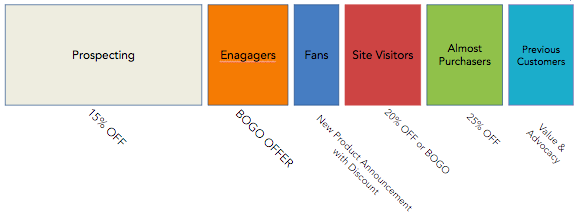
Notice that each audience segment has a different offer and different ad copy. Fans are different than previous site visitors and previous customers differ from potential customers that have engaged with you.
Every grouping needs its own tailored creative and message. These offers aren’t specific to what I do every time but it gives you a beginning idea of how I think about it.
Take the Wheel
This post is just the tip of the iceberg of how to turn ads around from failing to scaling — there are plenty of other options and solutions. What has worked for you when things have started to go south? Let me know below in the comments!
Training Course
If this topic is interesting to you, I’m teaching a course called “From Failing to Scaling: Trusted Strategies for Account Recovery and Growth” with Jon. We’d love to have you join us.
You’re not alone if you are experiencing issues with ad performance right now. You want to scale, but you might not know how exactly to turn things around. This course helps you with the following:
- Steps to take right away to stabilize an underperforming account
- Understanding how to properly and sustainably scale
- Bringing new ideas into the mix to save performance
- Notice the warning signs moving forward
- How to save money and take control
The post Take Your Ads From Failing To Scaling appeared first on Jon Loomer Digital.